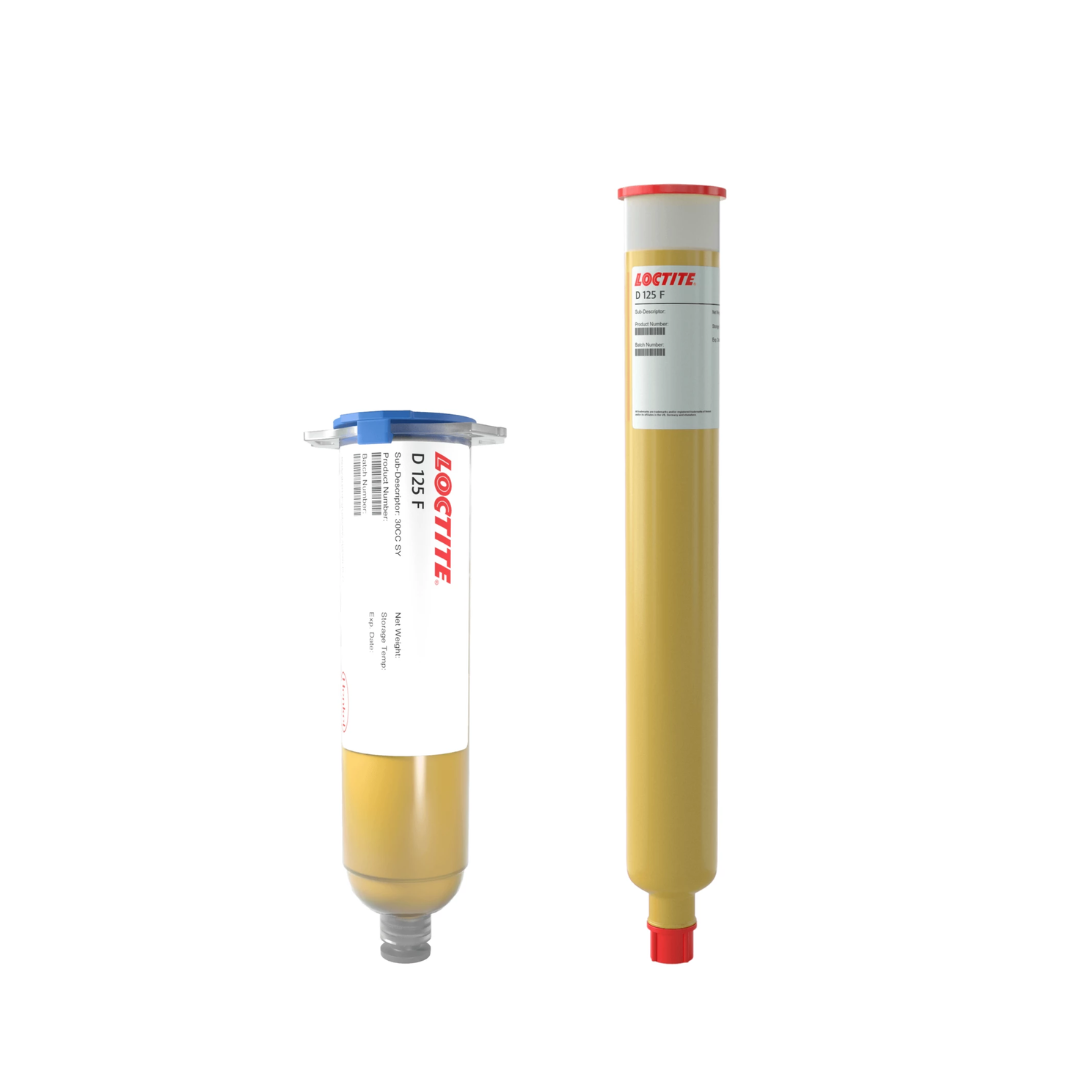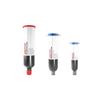LOCTITE D125 F
- Low exotherm
- High speed dispensing
- Low cure temperature
Product Description
LOCTITE D 125 F is a one-component, heat-curable epoxy adhesive specifically formulated for high-speed dispensing in surface mount technology (SMT) assembly. With its low exotherm and minimal water absorption, LOCTITE D 125 F reduces thermal stress on components while ensuring strong adhesion and process reliability.
This yellow adhesive exhibits excellent non-sag and non-stringing characteristics, enabling precise, clean application for chip capacitors, chip resistors, SOTs, SOICs, and PLCCs. It offers high hot strength and fast curing at low temperatures, making it well-suited for demanding, high-throughput electronic manufacturing.
Applications
- Surface mount assembly of chip capacitors and resistors
- Bonding SOTs, SOICs, PLCCs, and other SMT components
- High-speed, precision dispensing processes
- Electronics production requiring low cure temperatures and non-sag adhesives
Technical Specifications
| General Properties | |||||
| |||||
| Specific Gravity Specific Gravity Specific gravity (SG) is the ratio of the density of a substance to the density of a reference substance; equivalently, it is the ratio of the mass of a substance to the mass of a reference substance for the same given volume. For liquids, the reference substance is almost always water (1), while for gases, it is air (1.18) at room temperature. Specific gravity is unitless. | 1.275 | ||||
| Physical Properties | |||||
| Viscosity Viscosity Viscosity is a measurement of a fluid’s resistance to flow. Viscosity is commonly measured in centiPoise (cP). One cP is defined as the viscosity of water and all other viscosities are derived from this base. MPa is another common unit with a 1:1 conversion to cP. A product like honey would have a much higher viscosity -around 10,000 cPs- compared to water. As a result, honey would flow much slower out of a tipped glass than water would. The viscosity of a material can be decreased with an increase in temperature in order to better suit an application | 1750000 mPa.s | ||||
| Electrical Properties | |||||
| |||||
| Volume Resistivity Volume Resistivity Volume resistivity, also called volume resistance, bulk resistance or bulk resistivity is a thickness dependent measurement of the resistivity of a material perpendicular to the plane of the surface. | 1e 14 Ohms⋅cm | ||||
| Mechanical Properties | |||||
| |||||
| Thermal Properties | |||||
| |||||
| Glass Transition Temperature (Tg) Glass Transition Temperature (Tg) The glass transition temperature for organic adhesives is a temperature region where the polymers change from glassy and brittle to soft and rubbery. Increasing the temperature further continues the softening process as the viscosity drops too. Temperatures between the glass transition temperature and below the decomposition point of the adhesive are the best region for bonding. The glass-transition temperature Tg of a material characterizes the range of temperatures over which this glass transition occurs. | 85 °C | ||||
| Thermal Conductivity Thermal Conductivity Thermal conductivity describes the ability of a material to conduct heat. It is required by power packages in order to dissipate heat and maintain stable electrical performance. Thermal conductivity units are [W/(m K)] in the SI system and [Btu/(hr ft °F)] in the Imperial system. | 0.3 W/m.K | ||||
Additional Information
Cure Profiles
IR or Convection Conveyor Oven:
20 min @ 100 °C
7 min @ 110 °C
2.5 min @ 120 °C
1.5 min @ 150 °C
Convection Box Oven:
30 min @ 100 °C
20 min @ 110 °C
10 min @ 120 °C
5 min @ 150 °C
*Note: Ramp-up should not exceed 1 °C per second
Thawing
Remove the adhesive from cold storage.
Allow the material to reach room temperature (25 °C) before use.
Do not re-freeze once thawed.
Once thawed, apply using the recommended methods.
Directions for Use
- LOCTITE D125 F can be applied by dispensing, pin transfer, screen or stencil printing.
- Equipment set-up and related product information is available from your Henkel Corporation support group.




